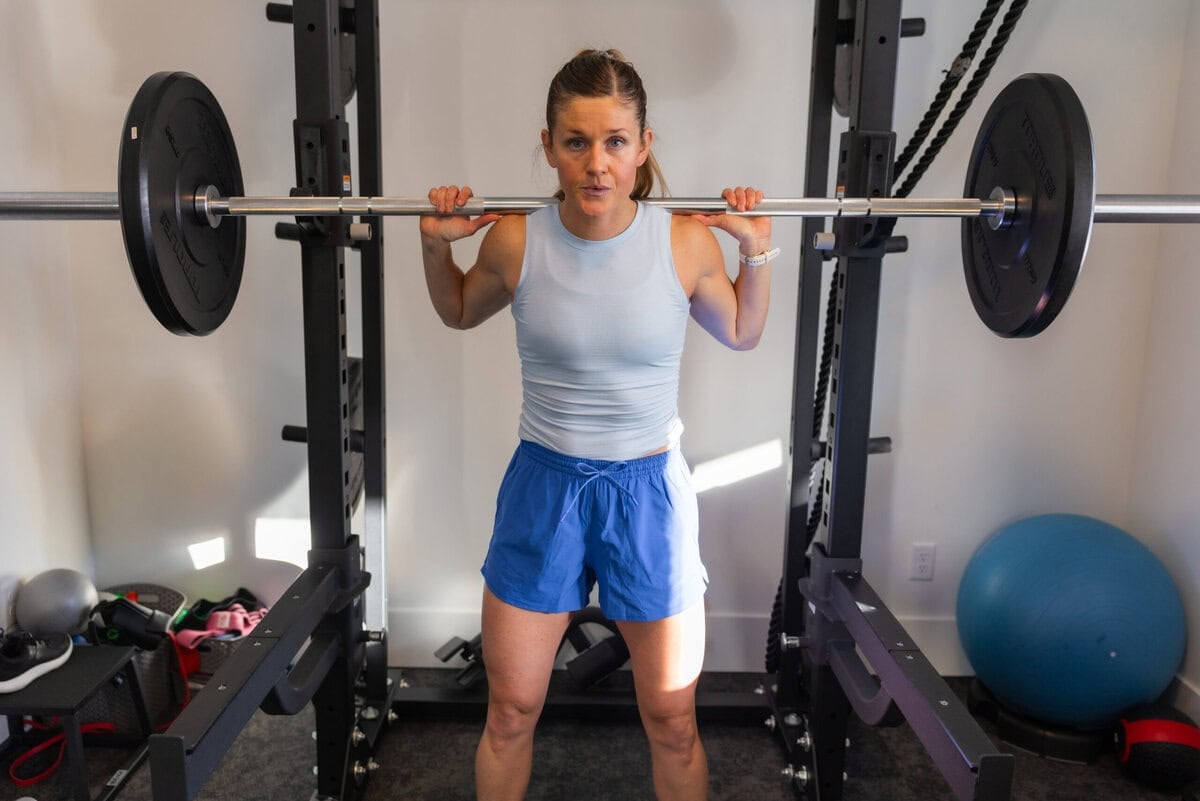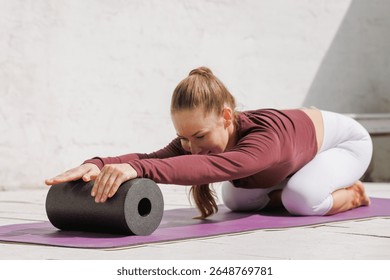Yoga for Flexibility: Essential Poses and Sequences for a More Supple Body
Introduction: Why Has Flexibility Become a Necessity, Not a Luxury?
In the midst of the fast pace of life and the daily demands that force us to sit for long hours, the human body has become more susceptible to stiffness and the loss of natural flexibility. Flexibility might seem like just an athletic advantage, but in reality, it is a fundamental pillar of general health and the functional longevity of the body. It is the key to reducing back and joint pain, improving posture, and preventing injuries that occur as a result of sudden or unaccustomed movements.
This is where yoga emerges as one of the most comprehensive and effective practices for enhancing flexibility. Yoga is not just a set of exercises; it is an integrated system that combines conscious movement, deep breathing, and mental focus. Through regular practice, yoga not only works to lengthen muscles and connective tissues but also teaches you how to listen to your body and safely and consciously transcend your limits.
This detailed article aims to be your comprehensive guide to yoga for flexibility. Together, we will explore the most impactful poses (asanas), provide practical sequences you can apply in your daily routine, in addition to professional tips for deepening your stretches and maximizing the benefit of every session.
---
I. Understanding the Relationship Between Yoga and Flexibility
Flexibility in the context of yoga does not mean the ability to twist the body into complex knots; rather, it means the healthy range of motion for the joints and the ability to move the body easily and without restrictions.
How Does Yoga Increase Flexibility?
1. Lengthening Connective Tissues (Fascia): Yoga does not only target muscles; it also targets the fascia, the network of connective tissues that envelops muscles and organs. Long, static stretches in yoga help to hydrate these tissues and free them from stiffness. 2. Improving Blood Circulation: The poses increase blood flow to the muscles and joints, which carries oxygen and nutrients and helps eliminate accumulated lactic acid, thereby reducing the feeling of stiffness and pain. 3. Activating the Parasympathetic Nervous System: Many yoga poses, especially those that involve long holds and deep breathing, stimulate the nervous system responsible for "Rest and Digest." This neural relaxation allows the muscles to relax more deeply, enabling a greater stretch.
Benefits of Flexibility Provided by Yoga
| Benefit | Explanation |
|---|---|
| :--- | :--- |
| <strong>Reducing Back Pain</strong> | Strengthening and lengthening the core and hip muscles, which relieves pressure on the spine. |
| <strong>Improving Posture</strong> | Correcting muscular imbalances that cause slouching or hunching. |
| <strong>Injury Prevention</strong> | Flexible muscles are less prone to tearing or straining when subjected to sudden movement. |
| <strong>Enhancing Athletic Performance</strong> | Increased range of motion allows for higher efficiency in performing sports exercises. |
| <strong>Mental Relaxation</strong> | Focusing on stretching and breathing reduces stress and anxiety. |
---
II. Essential Poses for Deepening Flexibility (Asanas)
To achieve comprehensive flexibility, focus must be placed on the main muscle groups that are often stiff: hamstrings, hips, shoulders, and the spine.
1. Poses Targeting the Hamstrings
Stiff hamstrings are the most common cause of lower back pain.
Downward-Facing Dog Pose (Adho Mukha Svanasana): Description: A foundational pose that works to lengthen the entire back side of the body. Professional Tip: If your hamstrings are very stiff, start by bending your knees slightly, then "walk the dog" by alternately bending one knee and then the other. Standing Forward Bend Pose (Uttanasana): Description: Standing with the torso folded forward, trying to touch the ground. Professional Tip: Allow the head to dangle to increase relaxation in the neck and spine. You can hold opposite elbows to deepen the stretch. Pyramid Pose (Parsvottanasana): Description: A pose that requires standing at a certain angle with a forward bend over the straight front leg. Professional Tip: Keep the hips level and facing forward to avoid pressure on the lower back.
2. Hip Opening Poses (Hip Openers)
Emotional and physical tension is often stored in the hip area.
Pigeon Pose (Eka Pada Rajakapotasana): Description: A seated pose that involves bending one leg forward and extending the other backward. Professional Tip: Place a cushion or yoga block under the front hip if it is lifted off the ground. This ensures the hips are level and protects the knee. Butterfly Pose (Baddha Konasana): Description: Sitting with the soles of the feet together. Professional Tip: Use your thigh muscles to gently lower the knees toward the ground, and avoid pressing them down with your hands. Low Crescent Lunge (Anjaneyasana): Description: A low lunge pose that opens the hip flexors in the back leg. Professional Tip: Push the hips forward and down while keeping the torso straight to deepen the stretch.
3. Spinal and Shoulder Flexibility Poses
A flexible spine is the key to physical youth.
Camel Pose (Ustrasana): Description: A deep backbend pose that opens the chest and shoulders and stretches the abdominal muscles. Professional Tip: Start by placing your hands on your lower back for support before attempting to grasp your heels. Keep the glutes engaged to protect the lower back. Seated Spinal Twist Pose (Ardha Matsyendrasana): Description: A seated pose that involves twisting the upper body. Professional Tip: Begin the twist from the bottom of the spine (the abdominal area) and then gradually move to the chest and shoulders. Use your breath to deepen the twist with every exhale. Cow Face Pose (Gomukhasana) for Shoulders: Description: A pose that involves clasping the hands behind the back. Professional Tip: If you cannot clasp your hands, use a yoga strap or towel to hold between your hands.
---
III. Practical Yoga Sequences for a Daily Routine
To achieve maximum flexibility, the poses should be integrated into flowing sequences that allow the muscles to gradually prepare for deeper stretches.
Sequence One: Hip and Lower Back Flexibility (20 Minutes)
This sequence is ideal after a long day of sitting.
| Pose (Asana) | Duration (Seconds) | Primary Focus |
|---|---|---|
| :--- | :--- | :--- |
| <strong>Child's Pose (Balasana)</strong> | 60 | Relaxing the lower back and hips |
| <strong>Cat-Cow Pose (Marjaryasana/Bitilasana)</strong> | 60 | Warming up the spine |
| <strong>Downward-Facing Dog (Adho Mukha Svanasana)</strong> | 60 | Lengthening hamstrings and shoulders |
| <strong>Low Crescent Lunge (Anjaneyasana)</strong> | 60 per side | Opening the hip flexors |
| <strong>Pigeon Pose (Eka Pada Rajakapotasana)</strong> | 90 per side | Deep hip opening |
| <strong>Butterfly Pose (Baddha Konasana)</strong> | 90 | Opening the inner hips |
| <strong>Seated Spinal Twist (Ardha Matsyendrasana)</strong> | 60 per side | Spinal twist |
| <strong>Corpse Pose (Savasana)</strong> | 180 | Final relaxation |
Sequence Two: Comprehensive Full-Body Stretch (30 Minutes)
A comprehensive sequence that works on all major muscle groups.
1. Sun Salutation (Surya Namaskar): Start with 3-5 rounds to warm up the entire body. 2. Downward-Facing Dog (Adho Mukha Svanasana): 5 breaths. 3. Triangle Pose (Trikonasana): 5 breaths per side. Side stretch for hamstrings and torso. 4. Extended Side Angle Pose (Utthita Parsvakonasana): 5 breaths per side. Deep stretch for hips and thighs. 5. Warrior II Pose (Virabhadrasana II): 5 breaths per side. Strengthening and hip opening. 6. Wide-Legged Forward Bend (Prasarita Padottanasana): 10 breaths. Deep stretch for inner hamstrings. 7. Bridge Pose (Setu Bandhasana): 5 breaths. Gentle backbend for spinal flexibility. 8. Supine Simple Twist (Supta Matsyendrasana): 5 breaths per side. Spinal relaxation. 9. Corpse Pose (Savasana): 5 minutes.
---
IV. Practical Tips for Deepening Stretches Safely and Effectively
Flexibility is a journey that requires patience and awareness. Here are some tips to ensure your progress is safe:
1. Breath is Your Secret Key
Deep breathing (Pranayama) is the most important tool for deepening a stretch. When you feel resistance or pain in a pose, the natural reaction is to hold your breath. This increases muscular tension. Instead:
Use the Exhale: With every exhale, try to relax the targeted muscle and allow yourself to go deeper into the pose. Breathe Slowly and Steadily: Maintain a slow and even breath (Ujjayi breath) while holding the pose.
2. Using Props
Props like yoga blocks, straps, and blankets are not a sign of weakness; they are professional tools that allow you to achieve the correct stretch without strain.
Blocks: Use them to bring the floor closer to you in forward-bending poses (like Standing Forward Bend) if your hand doesn't reach the ground. Straps: Use them to lengthen your arms and reach your feet in seated poses (like Staff Pose).
3. The "Safe Edge" Principle
Never push yourself to the point of sharp pain or tingling. Pain is a signal from the body to stop. You should feel a deep, comfortable stretch, which is known as the "safe edge" or "comfortable stretch." If you are shaking or holding your breath, you are pushing too hard.
4. Long Holds (Yin Yoga Approach)
To effectively increase flexibility, you should hold poses for a longer duration, especially in hip openers and hamstring stretches.
Recommended Duration: 60 seconds to 3 minutes per deep pose. This allows the connective tissue (Fascia) to respond and lengthen.
5. Consistency is More Important Than Intensity
It is better to practice yoga for 15-20 minutes daily than to practice for two hours once a week. Regularity is what reprograms muscle memory and permanently improves flexibility.
---
V. Conclusion: Flexibility is Not a Goal, But a State of Being
The yoga journey toward flexibility is essentially a journey toward physical and mental awareness. As your body becomes more supple, you will find that your mind also becomes more flexible and capable of adapting to life's challenges.
We have reviewed the essential poses that target the stiffest muscle groups and provided practical sequences to integrate into your routine. Always remember that yoga is not a race. Start where you are, use your breath as your guide, and be gentle with your body. With commitment and conscious practice, you will discover that the flexibility you seek is not just a physical ability, but a state of freedom and comfort in your body and your life.
Start today, and give your body the gift of movement and freedom.



